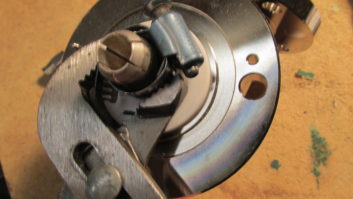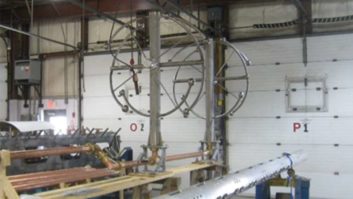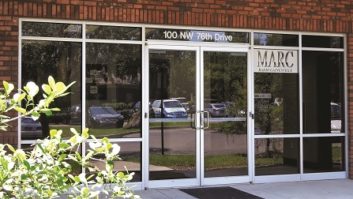Why the National Electrical Code and what is its purpose?
The why and what really are the same: NEC is a standards document intended to protect personnel — like you, me and our families — and material, such as your station equipment.
The National Electrical Code is an amazing document, one of the oldest, most widely quoted and recognizable standards extant. It is also one of the most misquoted and misunderstood documents not read by people who should have done so.
This is unfortunate, as the application of the NEC has a daily, profound effect on us personally and professionally.

Think about it. How many times today have you turned on a light, switched on an appliance or used electric power in some manner? Every electrical function that you initiated was somehow touched by the mandate of the NEC.
The universe of electric power can be divided into three traditional worlds: generation, delivery and consumption. Generation and delivery, in the past, were the realm of utilities; consumption was ours.
Today this is not necessarily so. New economies bring competition to generation — for instance, electric power is the largest monetary export of Canada — and to delivery, where multiple purveyors compete for customers trying to achieve lowest dollar costs (sounds like broadcasting!).
Things are changing, and you soon may be responsible for delivering your own power or generating some portion of your own.
The NEC primarily involves the world of consumption, defining standards from the place where the utility leaves off to the place where kilowatt-hours are used to do work.
From private to public
The NEC has an interesting history. It appeared during a transition period, around 1898, when early power technology purveyors and entrepreneurs such as Thomas Edison (DC) and George Westinghouse (AC) started to get out of the “soup to nuts” electric business. The custom had been for a single source to sell into mainly commercial or municipal markets the access to generation, power delivery, switch gear, premise wiring, lighting, utilization equipment, right down to instruction on use, maintenance, even new electric arc light stock. Essentially the customer enjoyed turnkey operation.
Electricity soon started moving into homes. With that, wiring began to be done by people without technical training.
The insurance industry recognized the need for standards. It would be impossible to insure all the places where power equipment was located unless wiring and devices met minimum standards.
The greatest risk was from fire or personal injury precipitated by improper installation or utilization of electricity. This was a real concern. Materials were not sophisticated (e.g., the covering on wire was often knitted and embroidered cotton over paper), and no universal standards assured uniformity among manufacturers.
The National Fire Protection Code, the fire insurance industry’s standards tome, got its first electrical section in late 1897. That section blossomed into the NEC.
Progressively, it developed into an independently published document as a more expansive, cohesive, specific text with more than 1 million changes implemented in the last 110 years over subsequent editions, perfecting older details while simultaneously assimilating and covering new materials, technology and techniques.
In paperback the 2008 NEC runs something close to 1,000 pages. An updated NEC comes out every three years or so. The latest copy on my desk is dated 2008; according to the publisher, the 2011 edition begins shipping in November.
One way I can tell if someone has actually ever read the NEC is to ask them how it begins. Essentially, the document starts with definitions but then continues by explaining itself in the first section — what it is and what it is not.
What it is: a set of standards that, if followed, will result in a safe (hence insurable) electric installation. What it is not, we are cautioned by the authors, is a “design manual.” For that reason, we also are cautioned that by following the NEC, our installation will be safe, though it will not necessarily be efficient. As long as the installation is minimally compliant, the optimization design for efficiency, suitability and quality are left to the engineer.
Who knows better?
I frequently encounter two phenomena: an arrogance among station personnel (including management) that they know better than the NEC; and “horror stories” involving broadcast electrical installations.
Most of these disasters, it appears, occurred when there had been no attempt to follow the dictates of the NEC.
The NEC does not and has not appeared wholly formed right out of the head of Jupiter. Over the years, thousands of knowledgeable people like you, from across the industry, have provided input and labored over substance and language to meet the goal of safety. In a typical version update, more than 1,500 people are involved on dozens of subcommittees, trying to optimize a few thousand words of changes. These folks typically bring 30,000 years of experience to the task.
Do you think that with your meager experience of a single lifetime, you or anyone around you should undercut them on safety factors?
The NEC normally has its greatest impact on us during new construction or retrofit, when engineers and contractors are most involved; the NEC affects both.
I have a leg in both camps; I am not only a registered professional engineer but also a licensed electrical contractor in several states. These are separate yet complementary activities.
An engineer has a strong mastery and knowledge of concepts and a workable knowledge of materials and their use. Conversely, a contractor has a strong knowledge of materials and a workable knowledge of concepts.
An experienced engineer can design for you an installation that is not only safe (NEC-compliant) but also more efficient, flexible, reliable and expandable. But even the best contractors may not be tuned into the specific needs or challenges of your station, although they will supply a workmanlike and compliant (hence, safe) installation.
Building codes and inspections
The National Electrical Code precisely is Section 70 of the National Fire Protection Code, or NFPC. The latter gathers codified safety standards for many types of installations, where there is a potential for fire danger and personnel injury (for example, range exhaust hoods for food preparation areas are covered in Part 94).
In most jurisdictions, an official body is involved in the permit and inspection process for new and retrofit construction. For most folks and their businesses, such as your station, that is the building office of your local municipality. Most of us interact with this authority in the person of the “building inspector.”
To draw together the plethora of codes and standards that affect construction, the Building Officials Code Authority publishes the BOCA code, which, with rare exception, is the umbrella standards document used by most inspection agencies.
For the most part, the NFPC and with it, the NEC, are taken whole form into the BOCA — similar to how the EIA-222 standard is taken in to cover construction and modification of tower structures. However, when you apply for your building permit, you should specifically inquire about the codes, the exact version used and what mandatory inspections are required.
Many jurisdictions have additive codes; the NEC is taken in whole body and an additional set of regulations are strapped on. Massachusetts, for instance, has specified exactly the color code for wire that should be used with various voltage systems. The NEC provides some latitude.
Certifiably Buc!

Author Charles “Buc” Fitch has been named Educator of the Year by the Society of Broadcast Engineers. Radio World nominated him in recognition of his many contributions to industry knowledge and training, including his Certification Corner series in RW Engineering Extra. Also, many municipalities use a previous version to maintain uniformity among inspectors and to allow all arbitrated decisions to have been finalized regarding new inclusions before they implement that version of the NEC. There are many locations still using the 2005 code such as Connecticut (at last check), and not the current, 2008, edition for this reason.
In regard to inspections, most locations require at least two: all rough-in and finished wire systems that will be hidden by walls, and a final. Occasionally, that final inspection can require all loads running so that the inspector can do a voltage drop, current and balance check.
In some locations such as Saratoga County, N.Y., inspections are done by a third party such as an independent underwriter, with the results being supplied to the building office and/or utility.
If they are going to be the inspectors, do not connect a wire to a screw before you speak with and arrange for the underwriter. Their involvement varies tremendously from location to location. Many locations that use underwriters require advance design approval.
On some projects involving major construction or elaborately designed systems, a peer review is substituted. In Massachusetts, these are known as Section 116 or 127 inspections, wherein the proponent hires an outside engineer (like me) who in turn actually works for the building inspector. As the project evolves, designs are reviewed, inspections are made, reports of these are filed by the outside engineer with the BI and the work proceeds at its own pace as long as the installation is compliant.
Examples of Section 116/127 events that come to mind include a multi-user tower, a complicated data processing center and a huge shopping complex. All were complicated and outside the usual experience of the building office, not to mention their time resources.
The NEC Thing
In summary, the NEC, by itself, is a safety standard that takes on the force of law because of its place in building and safety regulations. No matter the circumstances, your electrical installation will be subject to the NEC. But if you’re still not convinced, here are some reasons why you should follow the NEC:
- -You owe it to the person who follows you — the next guy at the station — to make certain your work is safe and predictable so that he doesn’t have the “shock” (pun intended) of discovering something odd, weird or unsafe.
- -At minimum the system will continue to be safe, if not as efficient as you might think it could be. A focus on safety will often prevent you from injuring yourself, saving you from your own ineptitude when you’re fatigued or careless.
- -You will preserve your insurability. Neither life nor business insurance will cover a loss from incompetence without a challenge. If you die of shock precipitated by an electrical hazard that you installed, it could be ruled a suicide.
- -Any savings in time or money that you create by cutting safety corners in the electric system will just be squandered by someone else. At the mint, they’re printing money three shifts a day, but they’re not making another you. No matter how little you might think of yourself, someone will miss you. So think of them before you use Scotch tape instead of a wire nut.
Make risk management work for you. If you do not feel comfortable doing electric work, the NEC is a great reason to have an outside professional come in to do it. “Boss, we can’t afford to have an unsafe or uninsurable installation, and it moves the liability outside the station. You know, the NEC thing …”
Charles “Buc” Fitch, P.E., CPBE, AMD, is a frequent contributor to Radio World. This article is an excerpt of a presentation at the 2010 SBE Chapter 14/Connecticut Broadcasters Association Engineer’s Day.









